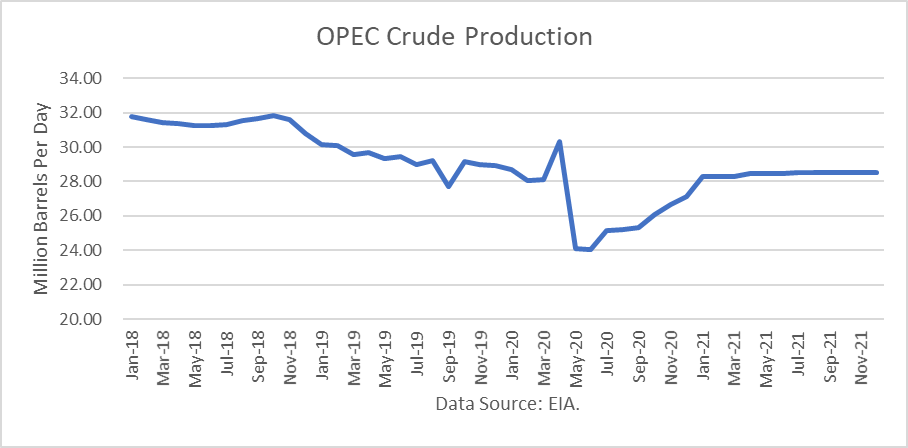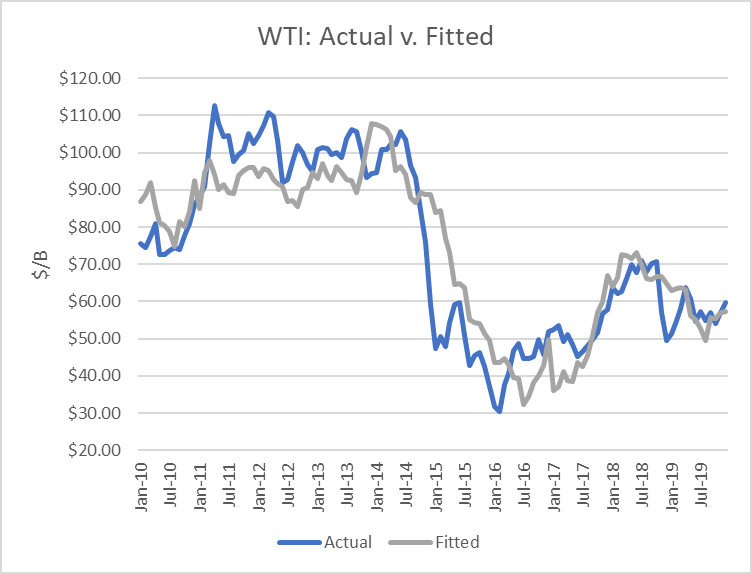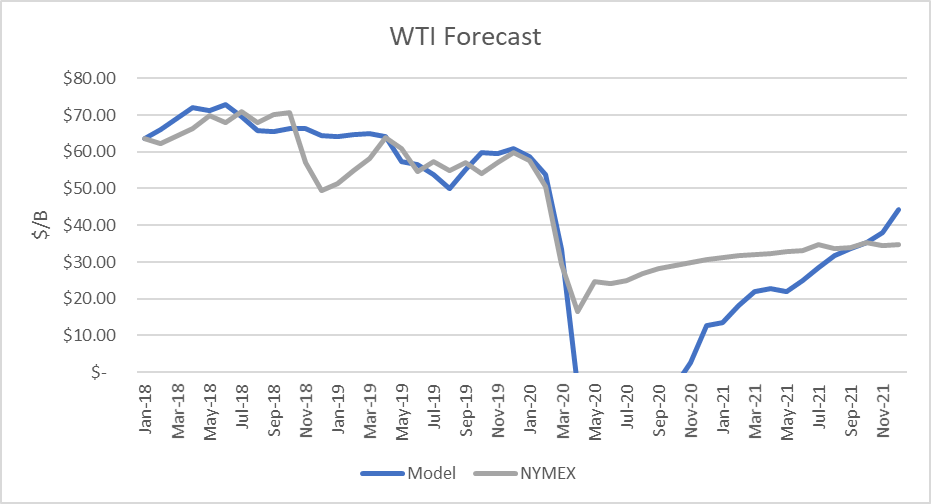The Energy Information Administration released its Short-Term Energy Outlook for May, and it shows that OECD oil inventories likely bottomed last June 2018 at 2.802 billion barrels. It estimated stocks built by 267 million barrels in April to end at 3.352 billion, 488 million barrels higher than a year ago.
The EIA estimated global oil production at 99.15 million barrels per day (mmbd) for April, compared to global oil consumption of 76.34 mmbd. That implies an oversupply of 22.81 mmbd or 684 million barrels for the month. A figure never experienced in history.
For 2020, OECD inventories are projected to build by 347 million barrels to 3.351 billion. For 2021 it forecasts that stocks will draw by 227 million barrels to end the year at 3.007 billion.
The EIA forecast was made to incorporate the OPEC+ decision to cut production and exports. According to OPEC’s press release:
“Adjust downwards their overall crude oil production by 9.7 mb/d, starting on May 1st, 2020, for an initial period of two months that concludes on June 30th, 2020. For the subsequent period of 6 months, from July 1st, 2020 to December 31st, 2020, the total adjustment agreed will be 7.7 mb/d. It will be followed by a 5.8 mb/d adjustment for a period of 16 months, from January 1st, 2021, to April 30th, 2022. The baseline for the calculation of the adjustments is the oil production of October 2018, except for the Kingdom of Saudi Arabia and The Russian Federation, both with the same baseline level of 11.0 mb/d. The agreement will be valid until April 30th, 2022, however, the extension of this agreement will be reviewed during December 2021.”
Oil Price Implications
I updated my linear regression between OECD oil inventories and WTI crude oil prices for the period 2010 through 2019. As expected, there are periods where the price deviates greatly from the regression model. But overall, the model provides a reasonably high r-square result of 79 percent.
I used the model to assess WTI oil prices for the EIA forecast period through 2020 and 2021 and compared the regression equation forecast to actual NYMEX futures prices as of May 11th. The result is that oil futures prices are presently overvalued for the forecast horizon. The model predicts oil prices would drop below zero even with the production cuts to be made by OPEC+ due to the inventory builds.
Uncertainties
The 4Q18 proved that oil prices can move dramatically based on expectations and that they can drop far below the model’s valuations. The attack on Aramco’s oil facilities also proved they can rise above the model-derived price, as did the days following the killing of the Iranian general.
Global oil demand dropped by about 24% in April from its 2019 average. The biggest issue is how much it might recover as virus-induced restrictions ease around the world and how fast the recovery might be. It is also unknown how much if any of the demand destruction will be permanent due to changes in business, such as online meetings instead of face-to-face meetings, and concerns about flying with infected people.
Changes in supply are almost equally uncertain. Questions remain about OPEC and non-OPEC voluntary production reductions, as well as shut-ins due to economic reasons. April production was only modestly affected. It remains to be seen how much output will go down in the near future and stay down.
Those uncertainties will result in how much stocks will further rise and whether they will reach storage capacity. Longer-term, they will determine at what rate inventories decline and how long it takes to clear the glut.
One major unknown is if a “second wave” of the virus will return in the second half of the year, as is being predicted by some scientists. Also, when effective treatments will be developed and manufactured so that health threats can be mitigated.
Conclusions
Never before have projections of both demand and supply been so uncertain. And no one knows how human and business behavior will be altered with regard to future travel by car or plane, which accounts for the bulk of petroleum use.
Right now, important decisions are being made about loosening restrictions so that businesses can ramp-up. For example, Los Angeles county expects to retain restrictions through July. And no plan has been set for New York and New England. In the U.S., California and the East Coast are responsible for a large part of petroleum use, and right now, no big ramp-up appears on the short-term horizon.
Check back to see my next post!
Best,
Robert Boslego
INO.com Contributor - Energies
Disclosure: This contributor does not own any stocks mentioned in this article. This article is the opinion of the contributor themselves. The above is a matter of opinion provided for general information purposes only and is not intended as investment advice. This contributor is not receiving compensation (other than from INO.com) for their opinion.





À l'heure actuelle, des décisions importantes sont prises concernant le relâchement des restrictions afin que les entreprises puissent se développer. Les prix du pétrole peuvent évoluer de façon spectaculaire en fonction des attentes et qu'ils peuvent descendre bien en dessous des valorisations du modèle.Ces incertitudes se traduiront par la quantité de stocks qui augmentera encore et par la capacité de stockage, les changements dans l'offre pour 2020, les stocks de devraient augmenter Pour 2021,les stocks se retireront pour terminer l'année.
"Right now, important decisions are being made regarding the loosening of restrictions so that businesses can grow. Oil prices can move dramatically depending on expectations and they can drop well below model valuations. These uncertainties will translate into the amount of stocks that will further increase and through storage capacity, changes in the supply for 2020, stocks are expected to increase For 2021, stocks will shrink to end the year". Translated via Google Translate
Nobody has a Crystal Ball that works properly, so anything to the right of May 20 is "just a guess". As Mr. Trump would say, "I believe it's going to go up. I hope it goes up."
Right now the oil price is being supported by the Fed. How is the Fed supporting oil prices?
By buying large oil company debt.
Robert
Your conclusions are not nearly as optimistic as the body of the article. Right now the oil price is being supported by the Fed. Demand has not increased and yet the price goes up? The markets and the "news" are so manipulated that I doubt any predictions can be reasonably made. I'm fairly sure that OPEC and Russia will not let prices get high enough to rescue the shale drillers or the smaller independent producers.